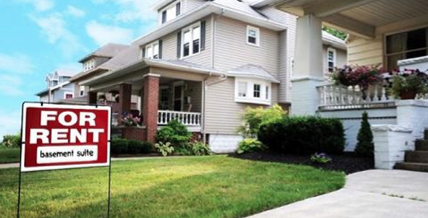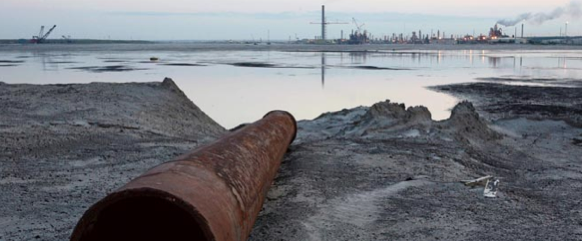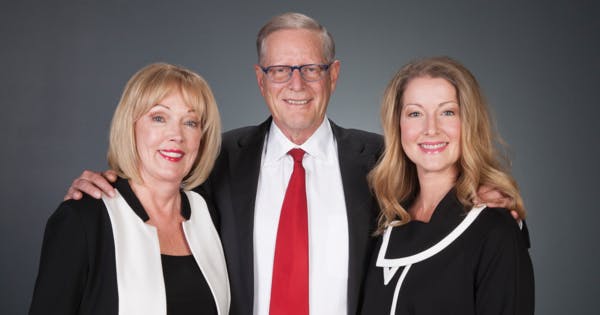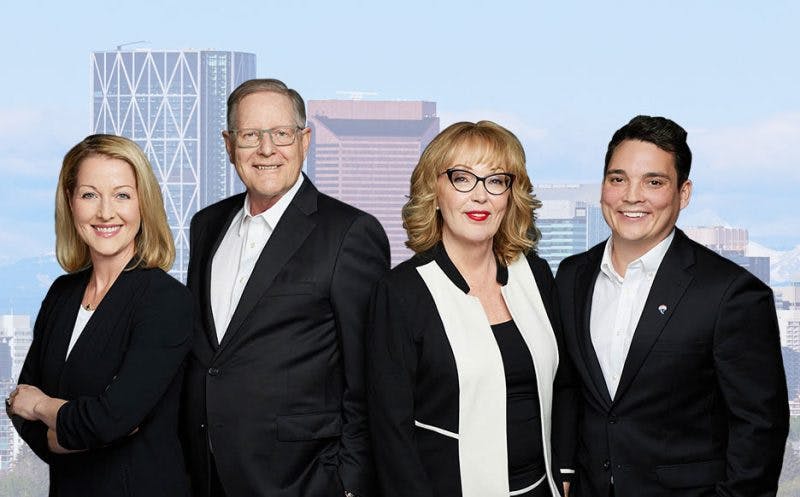Home buyers have become increasingly sensitive to their carbon footprint, allowing architects and engineers to use innovative processes and materials in creating and renovating high-end homes. Staying on top of these trends and technological advances will help luxury real estate professionals know what to look for and what questions to ask when assisting affluent clients who are seeking ways to recycle, reuse, and reduce. Foe rhe full article please click HERE or on photo below.Please do not hesitate to contact Doug, Susan or Kristen at Team Penley McNaughton with any questions – we are always here to help!

Go Green
Where can I recycle my Christmas tree in Calgary?
Doug, Susan and Kristen from RE/MAX Real Estate Central in Calgary hope you had a wonderful Christmas and wish you all the BEST on the year to come. Soon it will be time to clean up and get ready for the new year. I took down the tree today (always sad for me as I LOVE Christmas 🙂 ). If you are wondering where you can recycle your Christmas tree this year CLICK HERE.

The City of Calgary’s first ever Earth Hour event at Olympic Plaza!
What? Earth Hour a worldwide grassroots movement uniting people to protect the planet. In 2013, 7001 cities and towns in 154 countries and territories across all seven continents participated.

Who? This event is for all ages!
Where? Join us at Olympic Plaza for a family friendly party that will be ENTIRELY sustainably powered.
Why? Calgarians are united with the world in reducing our energy consumption
When? March 28, 2015 8:30pm-9:30pm local time. The challenge is to turn off ALL modes of power that rely on non-renewable energy sources.
PROGRAM
6:00pm – 9:30pm: A host of engaging activities including
8:00pm-8:30pm: A lantern/ LED light procession to exhibit and collectively celebrate powering down for the planet.
When posting use the hashtags: #earthhour2015 #earthhourcalgary and #arushacentre
Brought to you by the The City of Calgary, EcoLiving Events Calgary, Open Streets Calgary, and the Calgary Climate Action Network.
Depave Calgary
What is depaving? It’s a hands-on process of physically removing unnecessary paved surfaces and restoring them to vibrant and beautiful green spaces.
 By depaving, we can help:
By depaving, we can help:
- create vibrant, community green spaces that engage and connect neighbours;
- restore the natural cycle of water by allowing rain water to soak into the ground (filtering contaminants) and recharging our groundwater supply;
- prevent oils, fertilizers and other contaminants from entering our storm drains and potentially polluting our rivers and other waterways;
- replace hard impermeable surfaces with native plants, trees and shrubs that can help cool our neighbourhoods.
- Depave Your Community: Are you part of a school, community organization or church group with an asphalt space that needs transforming? We can help; through a series of facilitated workshops and a Depave Day, create a vibrant space that is water and community friendly.
- Depave Your Driveway: Are you a homeowner with an unnecessary paved area? We can show you how to get rid of that pavement and increase water infiltration! Either host a work party where you can have the help of many, or attend a work party so you can learn how it’s done before tackling your own project.
- Free for Green Calgary members
- $5.00 (incl. GST) for non members
Interested in learning more? Join us at one of our upcoming intro workshops. We’ll explain the process, what you’ll need, and how it all works! All workshops are scheduled at Green Calgary (#100, 301 – 14th St. NW).
Visit Green Calgary for more information!

The City is urging residents to green up their season this year with some easy tips.
“It doesn’t have to be complicated to cut back our environmental impact this time of year,” said Claire Beckstead, corporate environmental specialist with the City. “There are many simple green actions Calgarians can take that lessen our impact on the environment while keeping the fun and excitement of the season.”
Efficient lights
Consider either cutting back on the amount of lights you display this year, or, make the switch to LED lights, which can use 90 per cent less energy than regular holiday lights. Another suggestion is putting your tree and house lights on a timer.
Thermostat down
While cooking and hosting friends and family, things are going to warm up at home. Turn the thermostat down a few notches to save on the energy bill. Going away for the holiday? Turn your thermostat down while you’re away.
Transportation situation
The City said a lot of the holiday’s environmental impact comes from traveling and fuel consumption. They suggest using transit and/or walking as much as possible while getting your shopping done. If you do drive, try to carpool or do so during off peak times.
Give local
Give the gift of your own two hands by volunteering or giving gifts of passes to local sites or events. Or, check out local markets to find Calgary and area made products and gifts.
Eat local
Foods from afar have a large carbon footprint so try and stick to eats and treats close to home. The City recommends shopping for your dinner at markets or stores that supply local and organic products.
Wrap it up
Get creative with your wrapping this year, try using dish towels or clothing as wrapping, or, if you do use paper, try and avoid metallics and foil, which isn’t recyclable.
– http://www.crebnow.com/dreaming-of-a-green-christmas/#sthash.cPcqQOyk.dpuf
Calgary's first School & Community Edible Garden!
But only with your help… This idea needs your vote (everyday) to come into fruition!

Unique in scope, design and community connections, “The Owls’ Nest Too – Altadore School and Community Edible Garden” will be Calgary’s first school & community edible garden. “The Owl’s Nest Too” will be an organic, sustainable, edible garden and community learning place where healthy children, healthy communities, and environments grow!
CLICK HERE TO VOTE: https://www.avivacommunityfund.org/ideas/acf22028
Overview
Our Vision: Imagine a class of urban children with their hands in the soil, learning how to grow their own food, discovering how the natural world sustains them, and developing a deep-rooted sense of environmental stewardship as they become intimately familiar with the ecosystem of a thriving organic garden. Listen as their teachers connect this hands-on work with core curriculum subjects of science, math, social studies, language, art and music. Now imagine those students and teachers connecting with their community at that garden; people of all ages, all cultures, and from diverse demographics working and learning side-by-side, sharing the common goal of a bountiful harvest and a delicious meal, while experiencing first-hand how to care for themselves and our earth.

History: Altadore School is an urban public school with 303 students in grades K-6, with a history of leading the way for Calgary Board of Education schools in sustainability and outdoor education. Our award-winning “Altadore Owls’ Nest” was Calgary’s first school-ground naturalization project, built in 1998, has become a treasured ecological learning space for our students and community. Recent years have brought unprecedented densification of land in our community, while city agencies and communities are beginning to advocate sustainable living, eco-stewardship and edible education. Currently there is a large area of unused space on our school ground that could serve our community, school and environment if it were developed into a unique edible garden: organic, sustainable, educational, and linked to the community served by the school. A growth and conceptual extension of “The Altadore Owls Nest”, “The Owls’ Nest Too” promises to open new ways of looking at curricular competencies, community and interagency collaborations, and multi-generational learning under the umbrella of environmental responsibility and sustainability.
Our Project: The Owls’ Nest Too, Altadore School and Community Edible Garden: Unique in scope, design and community connections, “The Owls’ Nest Too – Altadore School and Community Edible Garden” will be the first, large scale school and community edible garden in Calgary. Combining both school and community garden, and encompassing 11,600 square feet of unused school field to the north of our gymnasium, “The Owl’s Nest Too” will be organic, sustainable, and will work like this:
-
- Individual class plots will provide each teacher and class an environment to plan, plant, maintain and harvest organic crops of their choice at a level of involvement that works best for each teacher and their desired learning outcomes.
-
- Every class plot will be paired with a community gardener who will have an adjacent plot to grow their own crops; and who assist in maintenance during the school year and will maintain their corresponding class plot throughout the summer months.
-
- 4 raised and accessible garden plots will be available for our community senior’s group.
-
- All gardeners will participate in a large, 24’ x 48’ for-charity garden.
-
- Further design plans include two paved and sheltered outdoor classroom/gathering areas (with work tables, wash areas, seating and student supplies), an orchard, berry plots, herb spirals, composting areas and perennial food and pollinator gardens.
-
- Educational and community enrichment plans include school-wide education, curriculum development and teacher training, student and community club development, publicly accessible learning series’ and educational talks by gardening and sustainability experts, community-based garden building and harvest events, and the provision of a place to learn, work, grow and celebrate together.
Please Vote for our project : “The Owls’ Nest Too – Altadore School & Community Edible Garden”, and help us create a school-ground edible garden where healthy children, healthy community and healthy environments grow – for generations to come – we all thank you in advance for your support!
Secondary suite debate returns to city council

The groups in favour of allowing secondary suites in all Calgary neighbourhoods include the key organizations for post-secondary students, businesses, poverty issues, conservative libertarians, home builders, developers and economic development.
Groups on the debate’s con side? That appears to be the exclusive domain of community associations, whose volunteer leaders regularly come to public hearings to persuade councillors an extra basement unit would worsen problems like parking, and that one may lead to many more where they don’t really belong.
These final bastions against citywide suite reform aren’t speaking with one voice — far from it.
Community associations have been more likely to support than oppose rezoning applications for suites in 2014, city records show.
“Overall there is actually — I’m not going to say support. I think people have come to accept them in the community,” said Murray Ost, president of Glenbrook Community Association.
“Four years ago, we would have had a different conversation. It’s quite a dramatic change.”
The issue returns to council Monday. Planners and inner-city councillors are offering separate proposals to take approvals on individual suites out of politicians’ hands and into planning staff’s. Both proposals bid to ease the affordable rental shortage and end the time-consuming process of council vetting one suite at a time.
The pitch by councillors would only lift zoning prohibitions in inner-city wards and near major transit stops.
The suburban majority on council has long opposed suite reform in existing stand-alone housing districts, largely influenced by protests from neighbours and community leagues.
But as homeowners seek zoning changes for suites, many community associations don’t put up resistance.
Of the 27 proposals that have gone to Calgary Planning Commission — the step before council hearings — only seven have received letters of concern from community leaders. Eight were supported or faced no objections, while the rest received no comment from the volunteer associations tasked with considering development changes.
In Cedarbrae, secondary suites have long existed legally in some zones and illegally, said Paul Bowen, the community’s past president. He views giving homeowners a path to creating legal, safer suites as a “win-win.”
“We haven’t had the issue come up in a big way, so sometimes silence may be more acceptance than anything,” said Bowen, who used to work for city hall’s affordable housing unit.
In Glenbrook, most of the neighbourhood has always been zoned for suites. Ost, the west-end community’s longtime president, said some opponents remain, but they’re a minority among homeowners.
“They see that the fears of the impact are often larger than the impact itself,” he said.
Directly south of Glenbrook, the community president in Glamorgan sees it differently. More homes there are zoned RC1 or R1, the land-use zone that doesn’t allow suites — and comprise 53 per cent of all residential properties in Calgary.
“People buy R1 because secondary suites are not a permitted use,” said Glamorgan’s Beryl Ostrom.
Neighbours do not want to be forced to allow short-term rental suites, when there are many areas that already permit them and the city could push for provincial rent caps or lower utility bills to improve affordability, she said.
“The more transient a community becomes, and the more rentals there are, the less vested interest people have in their community
Elbow Park’ development committee chair wrote the city to warn of deeper parking issues if a suite was allowed near the Glencoe Club. She also expressed concern about changing the neighbourhood “vibe” and setting the inner-city enclave on course for more suites, which “would change the designation of the R-C1 neighbourhood and make the term ‘single family home’ meaningless.”
Community associations don’t seem to have much company among organized groups with opinions on suite zoning prohibitions. Pro-reform groups include the Calgary Chamber of Commerce, Calgary Economic Development, the Manning Foundation think-tank, Vibrant Communities Calgary, the Canadian Home Builders Association, Urban Development Institute, and Calgary’s two university undergrad student associations.
Community groups aren’t always successful in persuading council, which this year to date has approved zoning changes for 16 homes and refused suites in six — with more to come this fall, like the proposals in Glamorgan, Glenbrook and Cedarbrae.
Earlier this month, councillors voted 9-5 to allow a suite in Elbow Park, over the community group’s protests. In Woodlands — in the ward of Diane Colley-Urquhart, a convert to the reform cause — the community association had no objections to the proposed suite but council refused it 8-6.
“If this becomes a plague, obviously we don’t want to see 100 basement suites put in the next year, but I find it difficult to take a stand against one suite,” community president Cec Jahrig said in an interview. Neighbours around Woodpark Close S.W. organized themselves and petitioned council against that one suite, successfully.
Shane Keating, one of the councillors who spiked that proposed suite, said the views of surrounding neighbours matters more to him. “Community associations don’t always have a finger on the pulse of all the residents,” said the southeast member, one of nine who’s against blanket rezoning to allow suites in all districts.
Coun. Druh Farrell isn’t confident the 15-member council will shift its view Monday, and said she may push to further delay her colleague’s motion.
Where council stands on suites
In favour of zoning to allow suites in all single detached house districts: Druh Farrell (Ward 7), Evan Woolley (8), Gian-Carlo Carra (9), Brian Pincott (11), Diane Colley-Urquhart (13), Mayor Naheed Nenshi.
Opposed: Ward Sutherland (1), Joe Magliocca (2), Jim Stevenson (3), Sean Chu (4), Ray Jones (5), Richard Pootmans (6), Andre Chabot (10), Shane Keating (12), Peter Demong (14).
By Jason Markusoff, Calgary Herald
Calgary sees growing trend in ‘green’ building construction
LEED certifications on the rise

The trend toward ‘green’ development picked up steam in Calgary last year as 48 projects gained LEED (Leadership in Energy and Environmental Design) certification through the Canada Green Building Council.
That brought the total number of buildings in the city with LEED certification to 125, said Mark Hutchinson, director of green building programs for the Council.
“There are over 300 if you include the 175 or so that have registered to pursue certification, but they’re at some stage of design or construction and they haven’t completed certification yet,” he said.
Last year’s number of certifications in Calgary was twice as many as the previous year.
“The certifications reflect when a project has been completed, documented and reviewed,” added Hutchinson.
The first LEED-certified building in Calgary was the Crowfoot Public Library in February 2005.
Throughout Canada, there were 1,756 LEED-certified projects at the end of June.
“We’ve got water treatment plants, schools, arenas, office buildings. All kinds of projects. Broadly speaking the breakout across the country . . . we see equal representation in LEED between the commercial sector and the public and institutional sector,” said Hutchinson. “I suspect in Calgary it’s probably about the same.
“Last year, we saw a growth, in particular, in the retail sector with Target coming to Canada they adopted a policy of certifying all their stores they were building to LEED. So there were six within the city of Calgary that were certified. There were a couple of Starbucks. Bow Valley Square certified last year. There were a couple of buildings at Deer Valley Market Place that were certified last year. So the retail sector was on a bit of an uptick last year.”
He said the LEED certification program continues to be strong across Canada as developers see many benefits of building green – from being more environmentally-friendly to attracting people and tenants to those buildings. The Council says the Canadian green building market is poised to see growth over the next three years with surveyed Canadian firms expecting to grow their green practices from one third in 2014 to one half by 2017.
The greening trend in development is also taking place in a general sense beyond just LEED certification as developers see the benefits of moving in this direction.
“The way we look at it there’s kind of two things that help us form our decisions. One is we try and re-use and adapt existing buildings so you see that in some of the investments that we’re making in all of our markets but in Calgary in particular,” said Michael Hungerford, partner with Hungerford Properties, citing the Icon Business Park and the Nexus Business Centre which have undergone multi-million dollar refurbishments in the city. “Reuse and adapting existing buildings I think is the greenest decision of all because there’s so much energy that goes into building these buildings to begin with. To throw that all away and discard it into the landfill is a real waste of energy.
“The second thing is what I would call a green mindset. As a developer, as we make decisions having a green mindset, and putting your green hat on if you will, you go about planning and designing and building projects.”
There’s not just economic benefits but human benefits in going green, said Hungerford.
By Mario Toneguzzi, Calgary Herald
We trust farmers, new survey says
Canadians love farmers, have split opinions on forestry and don’t understand mining, according to a survey of perceptions of resource industries.

“Western Canadian residents recognize the importance of resources to our economy; they broadly support continued growth of resource industries,” said Len Coad, who directs the Canada West Foundation’s Centre for Natural Resources Policy. “But they have some expectations where they feel a need for improvement.”
For a report published Friday, the foundation had Ipsos Reid survey 600 residents each from British Columbia, Alberta, Saskatchewan, Manitoba and Ontario for their perceptions of four natural-resource sectors.
“There’s been a growing awareness across the West in the past several years of the challenges of developing resources, of moving them to market and of meeting the expectations of the public,” said Coad, whose group will now dig down on policy suggestions.
The survey looked at perception, trust and willingness to advocate for the four sectors: energy, forestry, mining and agriculture. Responses were weighted by provincial population, while Ontario results were kept separate to compare attitudes with a region far less dependant on natural resources.
“Ontario was just for comparative purposes, and the range of answers was smaller than we had expected,” Coad said. “Ontario responses were mostly in-line with other provinces.”
Forestry was the most polarizing of sectors. The report notes that the sector is better respected after criticism over clear-cutting spiked in the late 1990s. But sustainability came out as both the top reason to support the sector at 22 per cent, and the top reason not to, at 30 per cent. Coad said it’s a trend seen across multiple sectors that speaks to divided perceptions among Canadians.
“What you’re seeing is people picking the same reasons for their negative views and positive views in terms of trust for industries. So we either really like them or we don’t.”
David Lindsay, president and CEO of Forest Products Association of Canada said most people don’t realize that trees cleared for industry must all be replaced with young trees.
“The forest products industry in Canada has been working hard to improve its environmental footprint and we’ve made excellent progress,” said Lindsay. He said paper mills have reduced their carbon footprint, and added that tactics like clearcutting replicate natural processes like wildfires.
“We have over 90 per cent of the forests that were here when Europeans arrived still forested. So we have a very sustainable industry,” he said.
Mining had the most varied support by province, which Coad said was unsurprising given its different manifestation in each province. “Alberta is mostly quarrying sand and gravel and digging rocks out of ground,” Coad said as an example. “In Saskatchewan mining is mostly potash and uranium which Alberta has none of.”
Overall, the sector had the lowest familiarity among Western Canadians, which didn’t surprise Pierre Gratton, president and CEO of the Mining Association of Canada.
“Forestry operations will cover huge areas, but a mine is very localized and unless you’re living in the community next to it you won’t think of it a lot, only in broad terms like economic contributions,” he said, pointing out that provinces with more mining had higher trust levels.
Gratton’s group has commissioned similar annual surveys specific to mining for the past three years, all of which had similar results to Friday’s report.
His group’s surveys have found government regulations perceived to be strong lead to better trust in mining companies.
Meanwhile, agriculture came out on top, with more than half of respondents saying that they trust the industry, understand it well enough to have an opinion and would be willing to speak positively about it.
Coad declined to speculate whether this was due to a perception of what has become a heavily industrialized sector as small-scale family farms. But he did point out that when asked to identify natural resource industries, only 16 per cent included agriculture, suggesting that “people don’t really view farming and agriculture as a resource industry.”
The report also noted that contamination or food safety issues could dramatically topple agriculture’s reputation.
Overall, Western Canadians linked resource sectors with employment opportunities, and the strongest driver of trust was impact on local communities. But environmental concerns were prominent for each sector.
“It’s not a surprise the public is looking for improvements on environmental performance, but it’s a bit of a surprise to the extent,” Coad said. An extensive part of the report focuses on a fourth sector, energy, which respondents found economically beneficial but lacking social responsibility.
The CWF said Ipsos Reid surveyed 3,038 people online in March, with a sample size considered accurate within plus or minus 2.2 per cent. No cost was given.
After much noise, a quiet approval
There’s no debate over the Northern Gateway pipeline.
There’s been plenty of talk – much of it impassioned, some of it belligerent – but in the dictionary sense of the participants in a discussion legitimately considering the different sides of a question, there really isn’t a debate over the oilsands pipeline Ottawa approved Tuesday.
The “noise” is drowning out actual dialogue.
The issue is about getting Alberta’s landlocked oilsands resources to overseas markets so that projected growth to 4.8 million barrels a day production by 2030 occurs. Or, it’s about coming up with ways to stop that scenario from playing out.
Pipelines – Enbridge’s Northern Gateway and TransCanada’s Keystone XL, in particular – have become the focal point of the war of words.
Both sides talk a good game for their supporters – defiance by the environmentalists and First Nations in British Columbia and accommodation by the oil industry and the federal government – but their narratives are all part of well-orchestrated messaging campaigns.
After six months of speculation since a federal environmental review panel approved the 525,000-barrel-a-day-pipeline – subject to Enbridge meeting 209 conditions – Prime Minister Stephen Harper’s cabinet quietly signed off on the decision. It was released with little fanfare after business hours Tuesday.
“Today constitutes another step in the process,” Natural Resources Minister Greg Rickford said in a statement.
“The proponent clearly has more work to do to fulfil the public commitment it has made to engage with Aboriginal groups and local communities along the route.”
Enbridge agreed it has “work to do” before a final investment decision on the $7-billion project. For the pipeline’s proponents, the heavy lifting ramps up as opponents dig in for a long fight. Litigation could hold development up for years.
There was no media availability with Harper or Rickford similar to the prime minister’s widely applauded news conference to explain the government’s decision to halt takeovers of Canadian oilsands producers by state-owned companies after the Chinese company CNOOC’s takeover of Nexen in 2012.
Ottawa contends pipeline bottlenecks cost the economy $20 billion a year and has made export infrastructure a priority in its goal of Canada becoming an energy superpower. Critics contend the risks of a spill – from either a pipeline or an oil tanker – outweigh the projected benefits.
It didn’t take long for the outrage at Ottawa’s widely expected decision to erupt. Nature Canada’s Stephen Hazell compared the potential for a spill from Northern Gateway to “playing Russian roulette.”
The Pembina Institute complained approving pipelines that encourage oilsands expansion “is not in the public interest” without regulations to curb GHG emissions in the sector.
Politicians and First Nations vowed to stop Northern Gateway in its tracks.
Presumably, Harper saw no upside in adding to the politically charged discourse. That’s understandable.
Both sides are deeply entrenched in their positions and that’s not likely to change.
In an era when the industry’s focus on gaining a “social license to operate” has been corrupted to mean everybody believes they are entitled to a veto, there isn’t going to be a consensus on any new pipeline. There is no level of trust nor any sense of common purpose on energy policy.
And deference to authority has largely disappeared among everyday citizens empowered with unprecedented information and the means of communication in an increasingly polarized society.
This isn’t the pipeline debates of parliament in the 1950s. (That being said: want to oppose?? Click on the following link: http://www.greenparty.ca/no-to-enbridge?utm_campaign=C14.ERP&utm_source=massmail&utm_medium=email)

It’s more akin to the endless abortion arguments – two groups diametrically opposed and unwavering. Both sides in the Northern Gateway dispute claim to be speaking on behalf of a greater public good.
The proponents cite its importance to Canada’s economy while opponents point to the threat from GHGs to the environment globally.
Both have expended a lot of effort to win over public opinion to their side.
Doug Eyford, who was appointed Ottawa’s special representative on West Coast energy infrastructure and aboriginal relations in December, has said “it’s never too late to engage,” but that optimism seems like a pipe dream at this point.
For all the talk, it is evident neither Enbridge nor the oil industry is counting on one or two disputed projects to get oil to markets.
The International Energy Agency predicted Tuesday that Canada could ship 300,000 barrels a day of oil to China by 2019 whether there is a West Coast pipeline or not, citing the increase in oil moving by rail and growing re-exports of Canadian oil through the United States.
“These volumes do not depend on the commissioning of new pipelines to … the Pacific coast,” the IEA said.
Whether oilsands opponents can muster the support to block all those routes is debatable.





